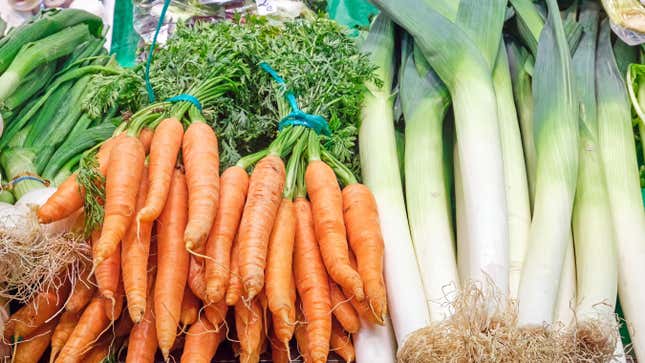
Gardens can vary in size, location, and the amount of sunlight they get each day. While most fruits and vegetables—especially those that produce flowers and fruits—do require at least six hours a day of direct sunlight, not all gardens get that type of exposure.
Fortunately, that still leaves a variety of veggies with edible parts that don’t need as much sunlight to grow—like root vegetables and hardy leafy greens—and can thrive in various types of shade. Below is a breakdown of the different types of shade, followed by some examples of vegetables that can grow in the shade.
What are the different types of shade?
Before you can decide which vegetables to plant, it’s important to determine exactly how much sunlight reaches your garden. According to the Farmer’s Almanac, the different types of sun and shade include:
- Full sun: 6–8 hours (or more) of direct sunlight per day, with peak sunlight between 10 am and 2 pm
- Partial sun: 3–6 hours of direct sunlight per day
- Partial shade: Roughly 3 hours of direct sunlight per day
- Light shade or dappled shade: Bright sun filtered through leaves overhead
- Full shade: Less than 3 hours of sunlight, with dappled light the rest of the day
- Deep shade: No sun at all (and as a result, no veggies)
The best vegetables to grow in the shade
Here are some examples of the best vegetables to grow in the shade, based on the amount of sunlight your garden gets:
Partial sun or partial shade
- Broccoli
- Cauliflower
- Kohlrabi
- Turnips
- Kale
- Rutabagas
- Cabbage
- Rhubarb
- Asparagus
- Jerusalem artichokes
- Brussels sprouts
- Celery
- Napa cabbage
- Horseradish
- Leeks
- Mizuna
- Mustard greens
- Parsnips
- Peas
- Scallions
- Broad beans
- Cress
- Collard greens
- Mache
- Tatsoi
- Claytonia
- Endive
- Radicchio
- Broccoli raab
Partial shade or full shade
- Radishes
- Carrots
- Potatoes
- Beets
- Lettuce
- Arugula
- Bok choy
- Chard
- Spinach
For more information, check out this article from the Farmer’s Almanac.

